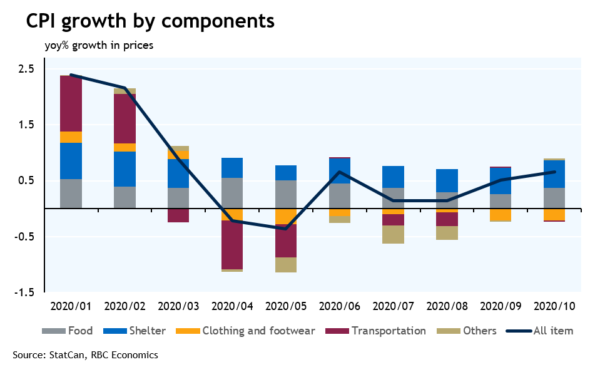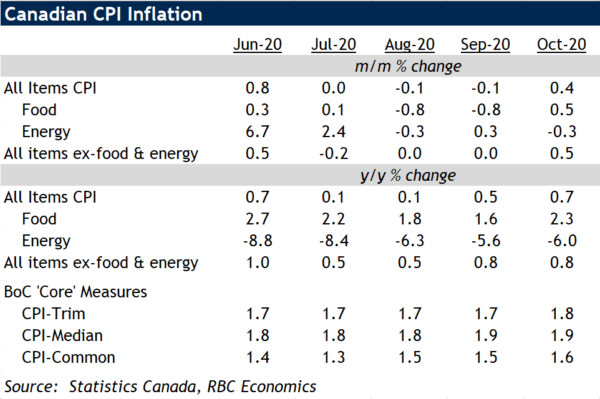- Headline CPI grew 0.7% year-over-year in October
- Bank of Canada’s preferred core measures ticked up but remained below target
- Weak economy still keeping price growth in check
Headline consumer price inflation growth rose to 0.7% in October, up from 0.5% in September. Growth in food prices ticked up to 2.3% after trending lower in prior months. Energy price growth ticked lower again to -6% from year-ago, which is still well above the trough of -23.7% back in April. Outside those components, prices grew a stable 0.8%, matching September’s reading. Price growth for the shelter component continued accelerated from higher home replacement costs, offsetting further slowing in mortgage interest costs. And much like the rest of post-COVID 2020, significantly lower demand for hospitality and travel services continued limit price growth for transportation and recreation components. Services inflation as a whole remained on the soft side at 1.2% from a year ago, a bit lower than September.
The Bank of Canada’s preferred core measures (“trim”, “median”, and “common”) that control for the volatility in individual price components ticked up a tenth in October, averaging at 1.8% year over year. Resilient household incomes (supported by unprecedented government supports for those losing work) have helped prop up consumer demand, limiting the price impact from a weaker labour market throughout the pandemic. But the economy is still running significantly below long-run capacity limits, with additional near-term downside risks coming from more stringent containment measures that could yet be imposed should the virus spread worsen. That should all keep a lid on inflation in the near-term and leaves monetary policymakers still free to focus on supporting the economy by keeping interest rates low.















